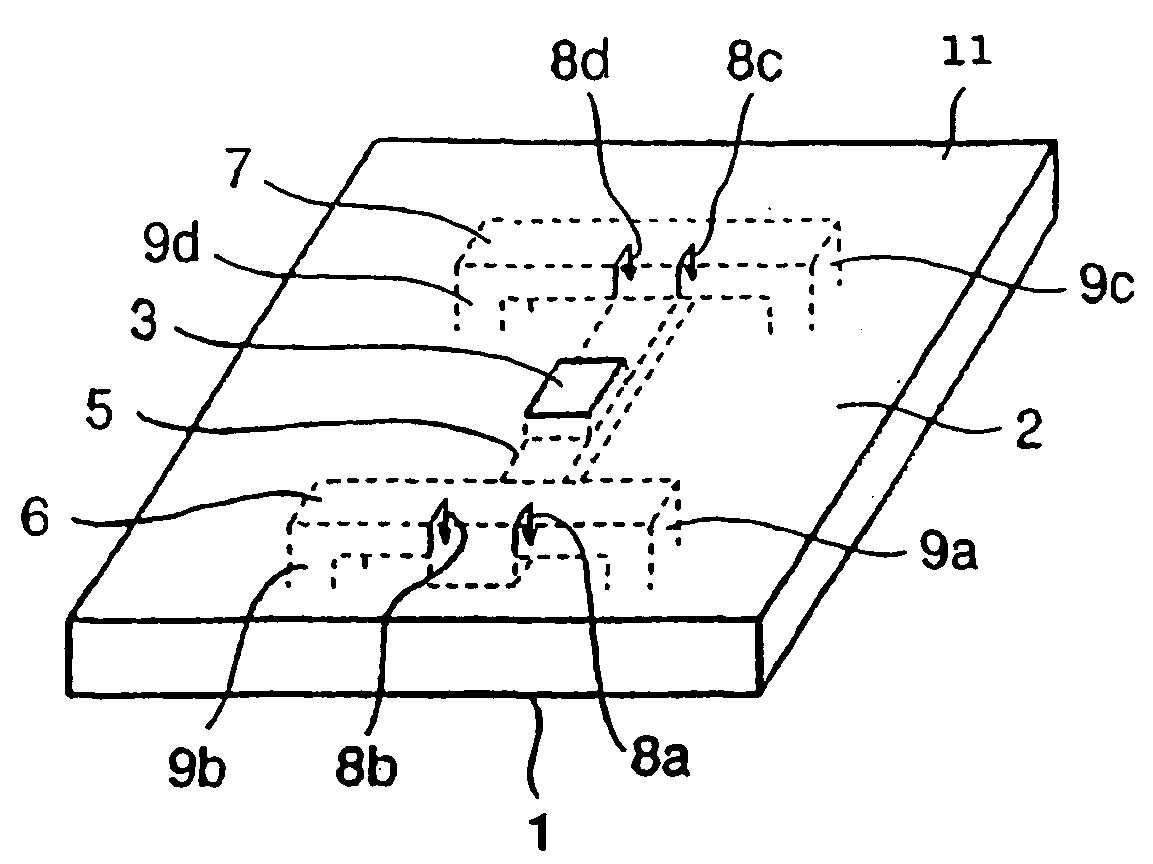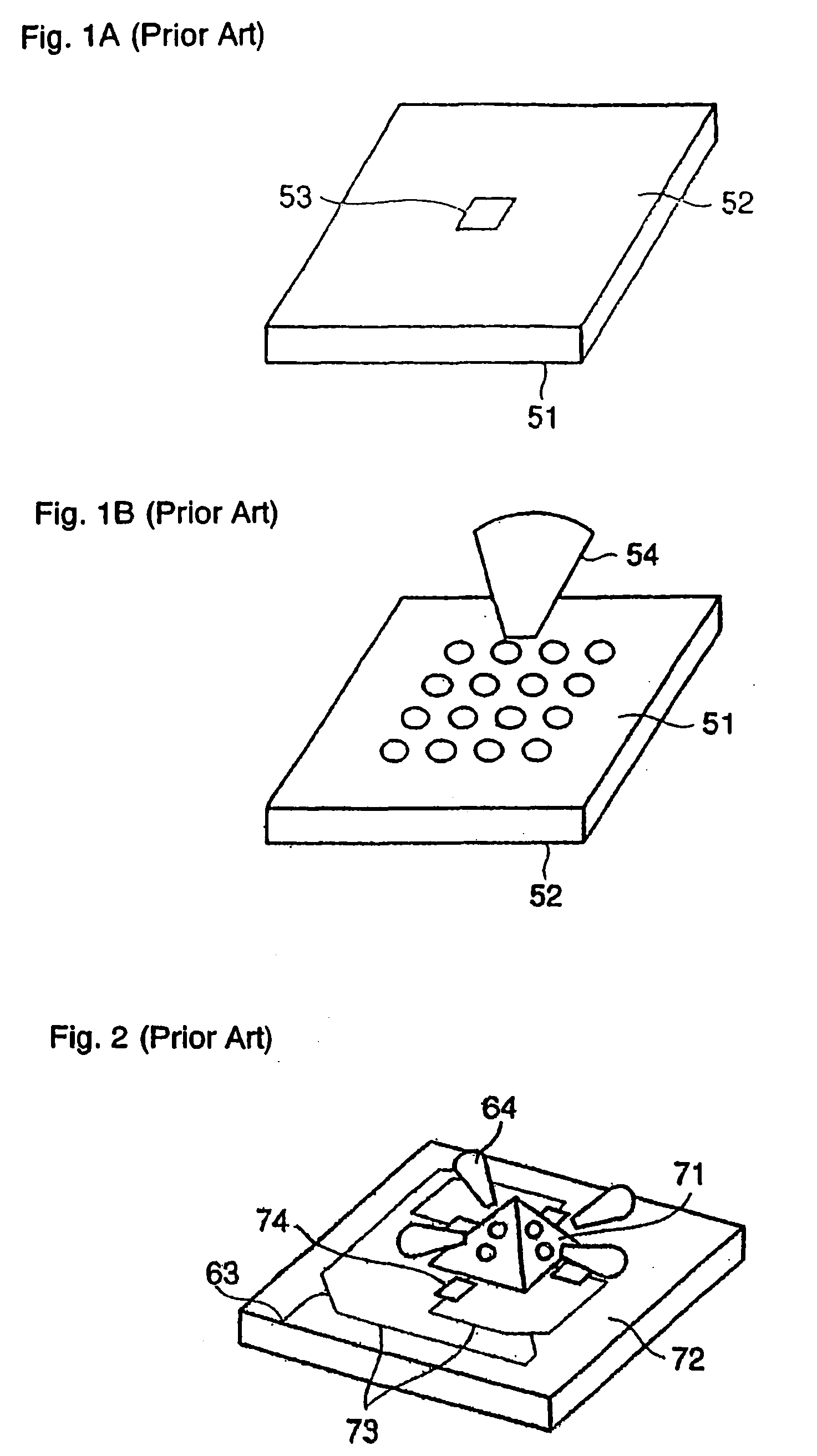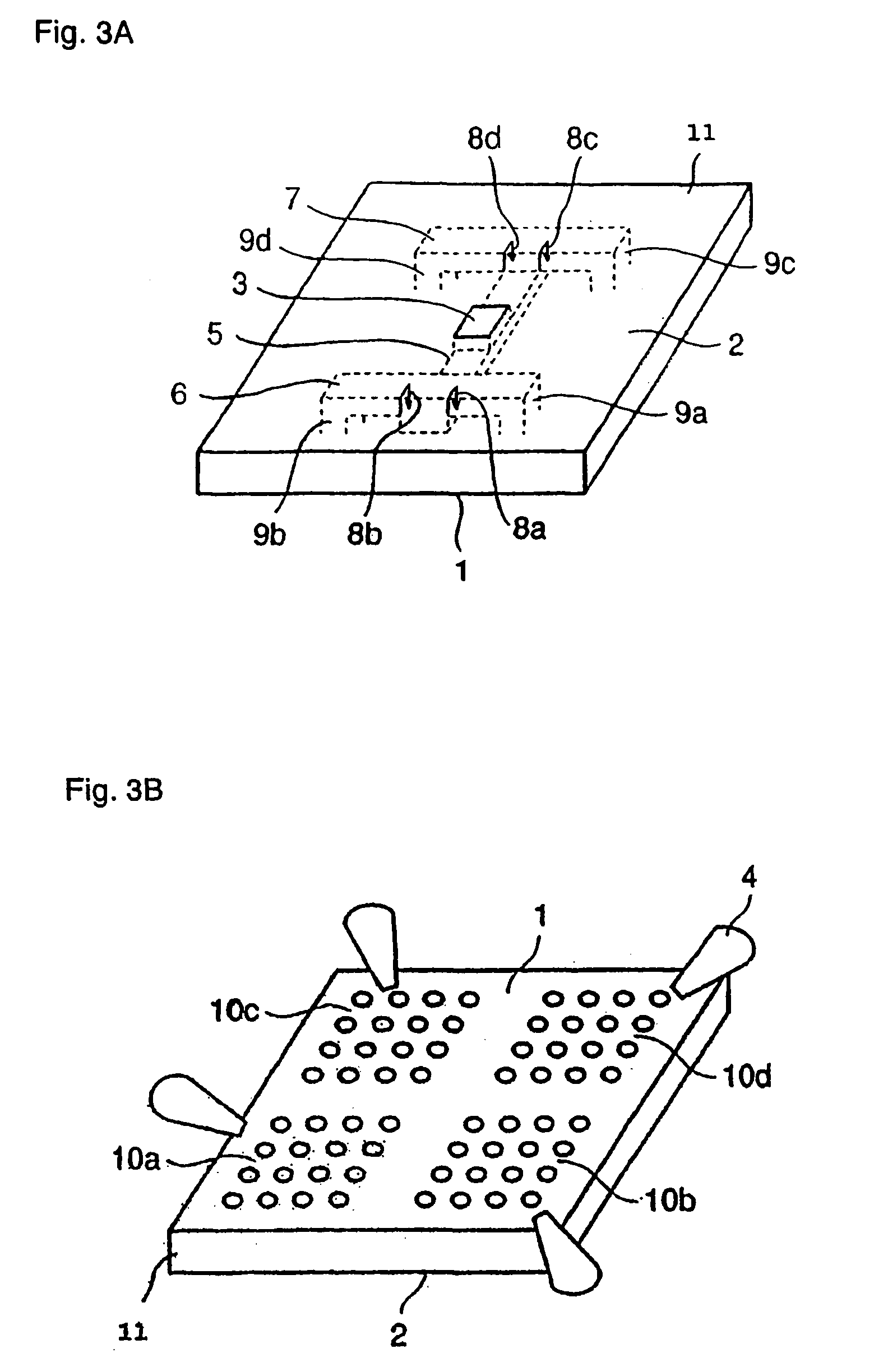Feeder waveguide and sector antenna
a feeder waveguide and antenna technology, applied in waveguide type devices, antennas, basic electric elements, etc., can solve the problems of inability to point-to-multipoint communication, shorten communication distance, poor usability, etc., to reduce power leakage, implement data transmission efficiently, and reduce power leakage
- Summary
- Abstract
- Description
- Claims
- Application Information
AI Technical Summary
Benefits of technology
Problems solved by technology
Method used
Image
Examples
Embodiment Construction
[0035] The following explanation regards an embodiment of the present invention with reference to the accompanying drawings.
[0036]FIGS. 3A and 3B are schematic views of a feeder waveguide according to an embodiment of the present invention and a sector antenna that is provided with this feeder waveguide. The sector antenna of the present embodiment is a planar antenna in which feeder port 3 is formed on one surface of dielectric board 11 and antenna elements are formed on the other surface; FIG. 3A being a perspective view as seen from the side of feeder surface 2 and FIG. 3B being a perspective view as seen from the side of antenna radiation surface 1.
[0037] In this sector antenna, a plurality of round elements is formed as antenna elements. These antenna elements are formed aligned in arrays in each of four regions, whereby the rectangular antenna radiation surface 1 can be split in two in both the vertical and horizontal directions. The antenna elements that are formed in each ...
PUM
 Login to View More
Login to View More Abstract
Description
Claims
Application Information
 Login to View More
Login to View More - R&D
- Intellectual Property
- Life Sciences
- Materials
- Tech Scout
- Unparalleled Data Quality
- Higher Quality Content
- 60% Fewer Hallucinations
Browse by: Latest US Patents, China's latest patents, Technical Efficacy Thesaurus, Application Domain, Technology Topic, Popular Technical Reports.
© 2025 PatSnap. All rights reserved.Legal|Privacy policy|Modern Slavery Act Transparency Statement|Sitemap|About US| Contact US: help@patsnap.com



